Fax
[1] Early systems used direct conversions of image darkness to audio tone in a continuous or analog manner.[2] However, they have largely been rendered obsolete by Internet-based technologies such as email and the World Wide Web, but are still used in some medical administration and law enforcement settings.Around 1900, German physicist Arthur Korn invented the Bildtelegraph, widespread in continental Europe especially following a widely noticed transmission of a wanted-person photograph from Paris to London in 1908,[14] used until the wider distribution of the radiofax.[15][16][17] Its main competitors were the Bélinographe by Édouard Belin first, then since the 1930s the Hellschreiber, invented in 1929 by German inventor Rudolf Hell, a pioneer in mechanical image scanning and transmission.[19][20][21] On May 19, 1924, scientists of the AT&T Corporation "by a new process of transmitting pictures by electricity" sent 15 photographs by telephone from Cleveland to New York City, such photos being suitable for newspaper reproduction.A photograph of President Calvin Coolidge sent from New York to London on November 29, 1924, became the first photo picture reproduced by transoceanic radio facsimile.Sensing a new and potentially golden opportunity, competitors soon entered the field, but the printer and special paper were expensive luxuries, AM radio transmission was very slow and vulnerable to static, and the newspaper was too small.After more than ten years of repeated attempts by Finch and others to establish such a service as a viable business, the public, apparently quite content with its cheaper and much more substantial home-delivered daily newspapers, and with conventional spoken radio bulletins to provide any "hot" news, still showed only a passing curiosity about the new medium.[25] By the late 1940s, radiofax receivers were sufficiently miniaturized to be fitted beneath the dashboard of Western Union's "Telecar" telegram delivery vehicles.In 1964, Xerox Corporation introduced (and patented) what many consider to be the first commercialized version of the modern fax machine, under the name (LDX) or Long Distance Xerography.This audio tone was then transmitted using an acoustic coupler (a speaker, in this case) attached to the microphone of a common telephone handset.At the receiving end, a handset's speaker was attached to an acoustic coupler (a microphone), and a demodulator converted the varying tone into a variable current that controlled the mechanical movement of a pen or pencil to reproduce the image on a blank sheet of paper on an identical drum rotating at the same rate.[29] Although businesses usually maintain some kind of fax capability, the technology has faced increasing competition from Internet-based alternatives.In July 2017 the United Kingdom's National Health Service was said to be the world's largest purchaser of fax machines because the digital revolution has largely bypassed it.[3] There are several indicators of fax capabilities: group, class, data transmission rate, and conformance with ITU-T (formerly CCITT) recommendations.[52] Modified READ, specified as an optional two-dimensional coding scheme in T.4, encodes the first scanned line using MH.This is fed into an arithmetic coder, which adds only a small fraction of a bit to the output sequence if the more probable pixel is then encountered.The ITU-T T.85 "fax profile" constrains some optional features of the full JBIG standard, such that codecs do not have to keep data about more than the last three pixel rows of an image in memory at any time.Group 3 fax machines transfer one or a few printed or handwritten pages per minute in black-and-white (bitonal) at a resolution of 204×98 (normal) or 204×196 (fine) dots per square inch.[56] As a precaution, thermal fax paper is typically not accepted in archives or as documentary evidence in some courts of law unless photocopied.Faxes are received as attached TIFF or PDF files, or in proprietary formats that require the use of the service provider's software.These applications make use of the phone's internal camera to scan fax documents for upload or they can import from various cloud services.
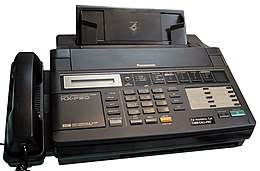

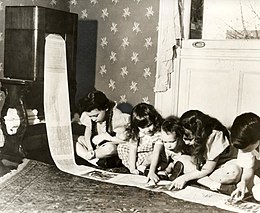
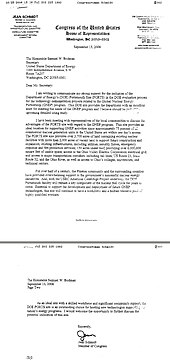
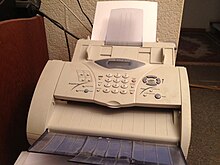
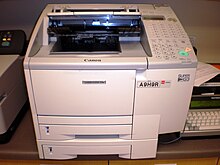

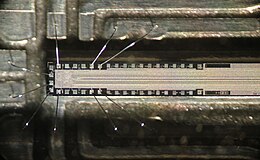
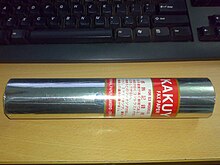
T30 (disambiguation)Fax (disambiguation)inkjet printingthermal printingthermal papertelephonicbitmapdata compressionInternetWorld Wide WebWirephotoAlexander BainFrederick BakewellPantelegraphGiovanni CasellitelephoneShelford BidwellArthur KornBildtelegraphÉdouard BelinHellschreiberRudolf HelltelautographElisha Grayspark printerRadiofaxRadio Corporation of AmericaRichard H. Rangerradio facsimileCalvin CoolidgeHerbert E. IvesRudolph ValentinoWestern UniontelegramUnited States ArmyfacsimilePuerto RicoDeal Test SiteCourier satelliteslow-scan televisionamateur radioLockheedphotocellmodulatoracoustic couplertelephone handsetdemodulatorHank MagnuskiGammaLinkGammaFaxAnalog Expansion Buslaser printerelectronic signaturesconvenience storesA4 paperCOVID-19 pandemicremote workfax serversNational Health ServiceLabour PartyDepartment of Health and Social CareLeeds Teaching Hospitals NHS TrustCarterfone decisionanalog televisionscan linespixelsOpen Document ArchitectureITU-T recommendation T.38IP networkanalog telephone adaptershandshakeV.34bisModified HuffmanModified Modified READModified Huffman codingGroup 4 compressionlosslessbi-levelhalftoneadaptive compressionarithmetic coderresolutionsuffixMIME typecompressedHuffman codethermal printersthermal transfer printersinkjet printerslaser printersscanningdirect thermalfax over IPInternet faxpersonal computersemail accountGramm–Leach–Bliley Actsoftwareunified messagingV.27terpacket lossjitter3D FaxBlack faxCalled subscriber identificationError correction modeFax artFax demodulatorFax modemFax serverFaxloreFultographImage scannerJunk faxTeletexTransmitting Subscriber IdentificationThe AtlanticWayback MachineBibcodeOhio UniversityThe New York TimesBBC NewsThe Registerpublic domain materialGeneral Services AdministrationMIL-STD-188